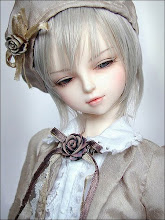Important Tourist Attractions
B.B.D. Bagh
Named after three young freedom fighters-Benoy, Badal and Dinesh, is a square built around the old Lal Dighi tank, which still exits. It was later called the Tank Square and then the Dalhousie Square. It is still the 'heart' of Calcutta and many famous buildings housing important businesses and banks are located here.
Other interesting buildings in the B.B.D. Bagh (Dalhousie) area are the Royal Exchange (a one-time residence of Robert Clive and now the office of the Bengal Chamber of Commerce and Industry), St. John's Church. This church's yard has the Mausoleum of 'Calcutta's Founder', Job Charnock. The building is supposedly the oldest piece of masonry in Calcutta.
Calcutta High Court
The Highest seat of judiciary in West Bengal. One of the oldest in India
(constructed in 1872), built in the Gothic style of architecture, it is a landmark in Calcutta. An extension was added later, which retains its architectural symmetry. Near Eden Gardens.
Calcutta University
The University of Kolkata is a hallowed institution of higher learning and was founded in 1857 under the direction of the Court of Directors of the erstwhile East India Company. The University of Kolkata was set up along with the similar Universities at Madras and Bombay.
The primary motive to set up Universities in key metropolitan cities of India by the East India Company was due to the fact the British regime needed trained and highly skilled manpower to run their day to day administration. To achieve this goal, the British regime introduced Institutions of higher learning which in the years to come would supply a steady stream of highly educated and intelligent young men to work in the British East India Company.
Fort William
The Military H.Q. of the Eastern Command. located on the Maidan, adjacent to Red Road. Named after Kind William III it can accommodate a garrison of 10,000 men.
General Post Office (GPO)
A piece of novel architecture located in the B B D Bag area. Controls the entire postal system of Calcutta.
Marble Palace
Situated close to the Tagore residence in the northern part of the city, the Marble Palace which houses an age-old art gallery owned by the Mallick family of Chorbagan. Built in 1835 by Rajendra Mallick, this art gallery personifies the earliest effort at collecting by a private individual. European art objects, oil paintings, both original and copies, and a varied assortment of Chinese and Japanese porcelain are amongst its prized collections. The paintings include works by Rembrandt, Reynolds, Rubens and Van Goyen besides many others. There is also a small zoo of birds and non-carnivorous animals. The Marble Palace has confirmed its place in the annals of history despite the colossal presence of the Indian Museum.
Metro Railways
The chaos of Kolkata streets are legendary. In the past, Kolkata was synonymous with potholed streets, packed-to-the-full buses and a sea of humanity almost of tsunami-esque proportions converging on the streets of Kolkata. But, with changing times, Kolkata has indeed evolved into a more organized city, thanks to the underground Metro Railways in Kolkata, which has to a great extent eased the traffic flow in Kolkata.
Nandan
A cultural centre for film enthusiasts and professionals, largely patronised by the late Satyajit Roy who inaugurated Nandan and designed its intriguing emblem. Its three motion picture theatres have the best screening facilities in Calcutta. One hall is used largely by film clubs to screen art movies for their members. Situated adjacent to the Academy of Fine Arts Complex.
Raj Bhawan
Now the residence of the Governor, was once the residence of the Governor-General of India. Based on an idea of the then Governor-General, Marquis of Wellesley, the building was modelled to resemble Lord Curzon's ancestral home - Kedleston Hall.
Saheed Minar
A monument similar to Qutab Minar of Delhi. This was known as Octerloney Monument. Located near Esplanade on the Maidan and seat of many memorable political meetings.
Victoria Memorial
Built between 1906 and 1921 on the lines of the Taj Mahal in memory of Queen Victoria. Topped with a moving angel this memorial faces the Calcutta Maidan. It houses paintings, manuscripts, and other objects of historic value in its Museum and Art Gallery. Two regular sound and light shows are held in the evening. Closed on Mondays.
Writer's Building
The seat of the West Bengal Government Secretariat, it is located in B B D Bag. Built during the days of the Raj, this building epitomises the political revolution of Bengal.
Read more




















